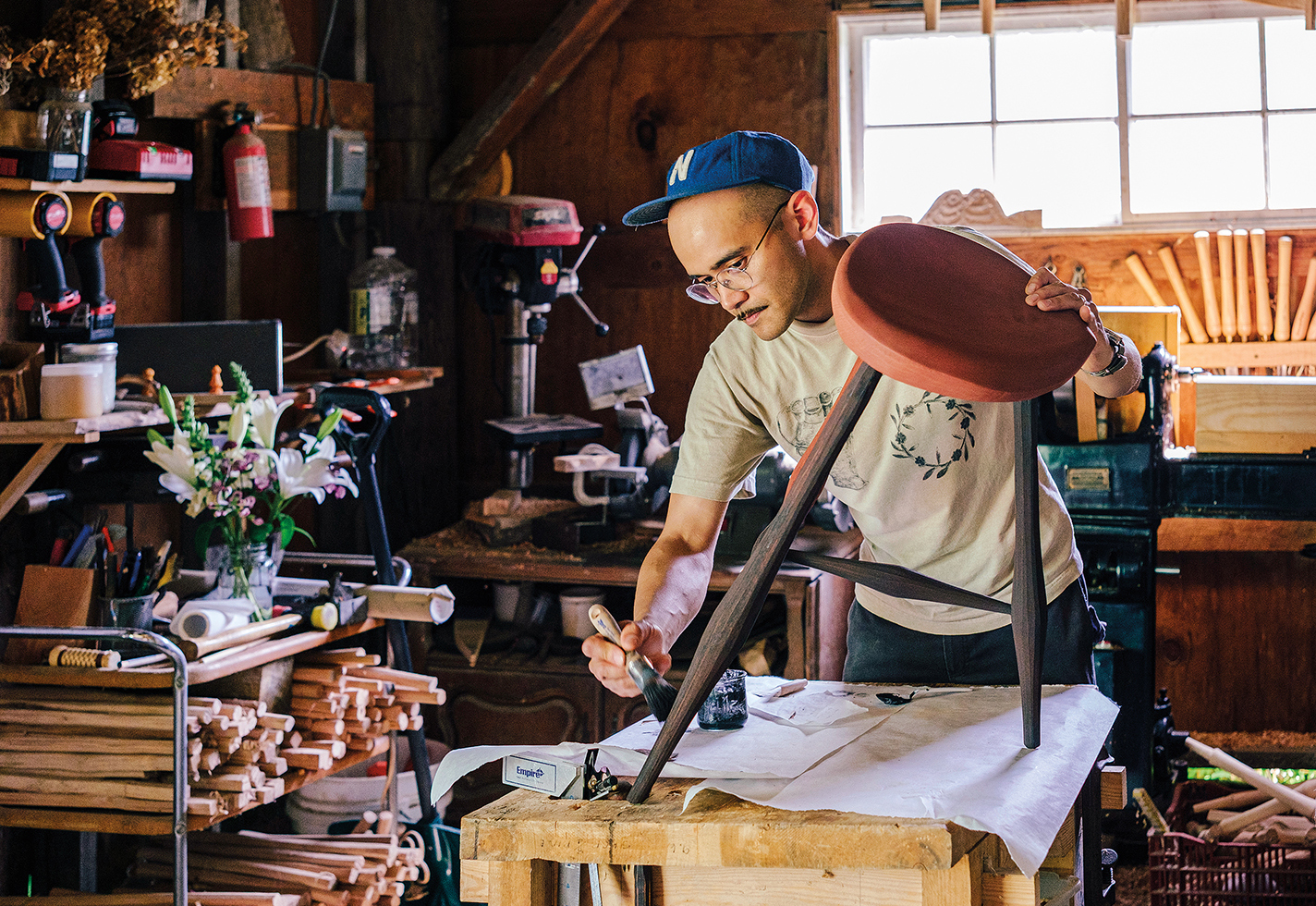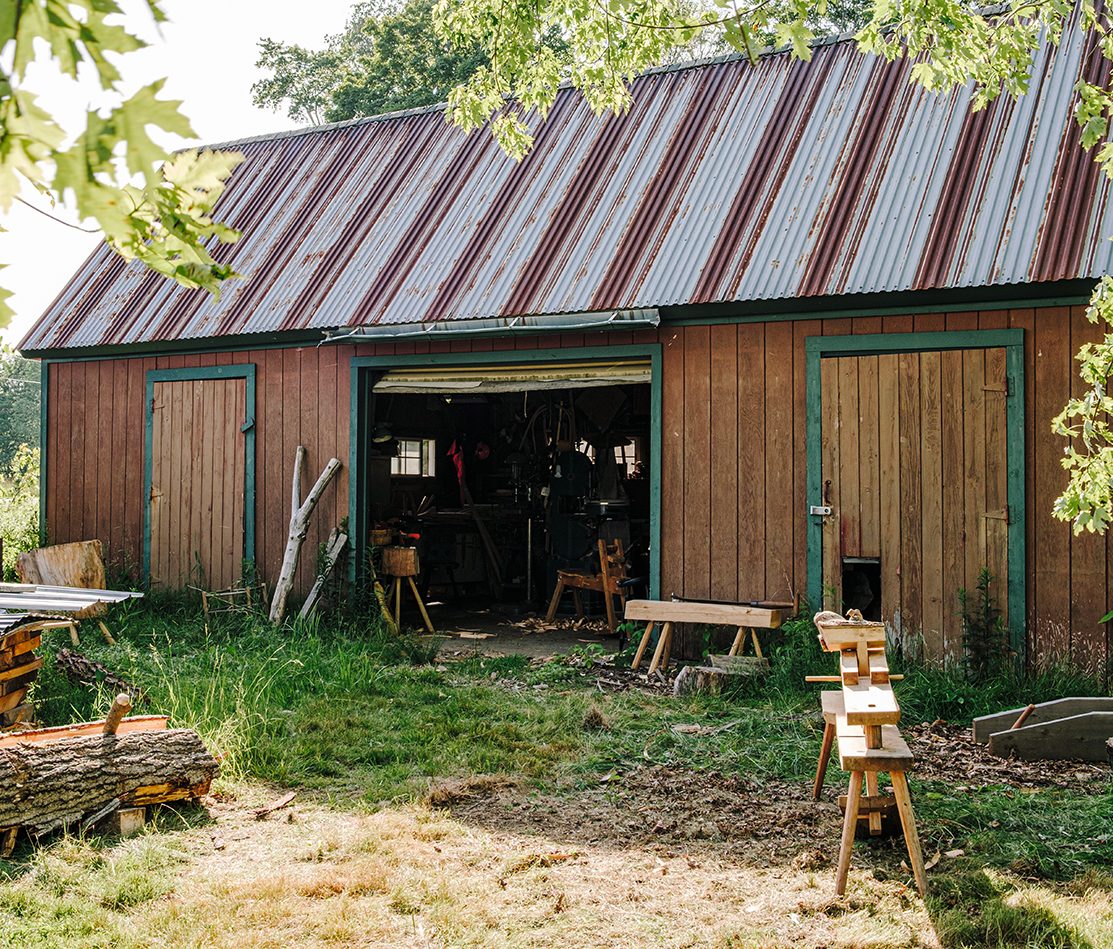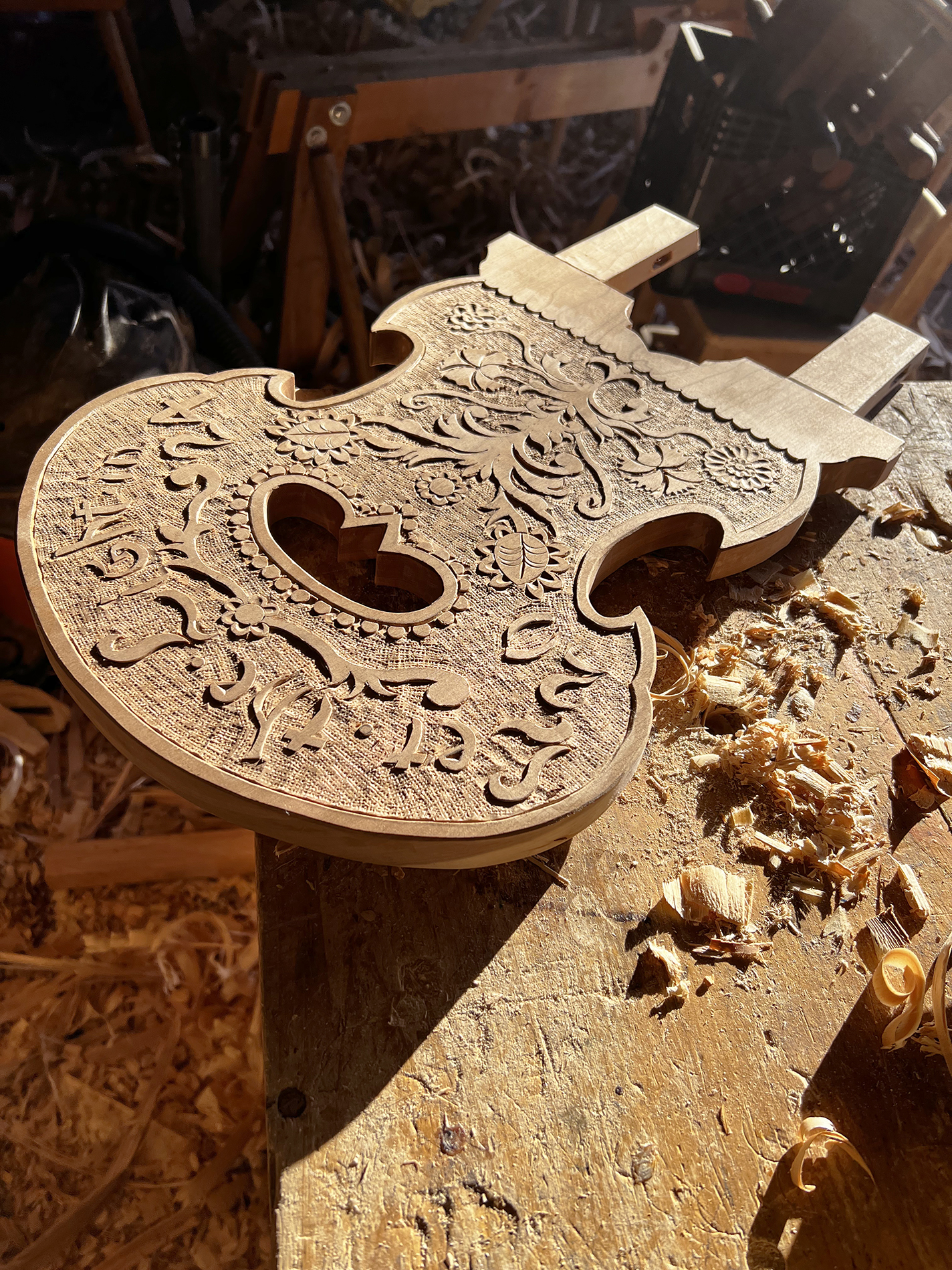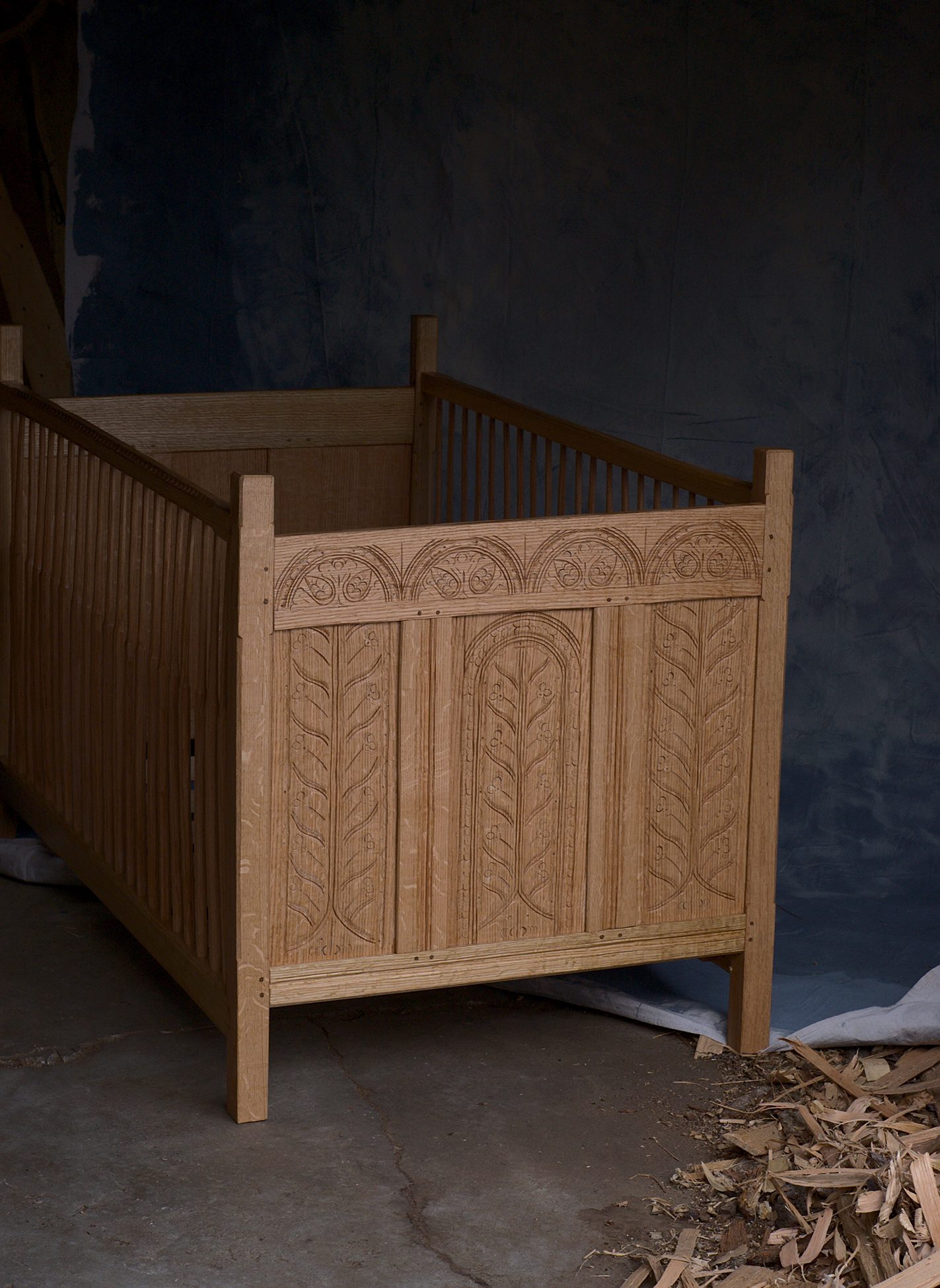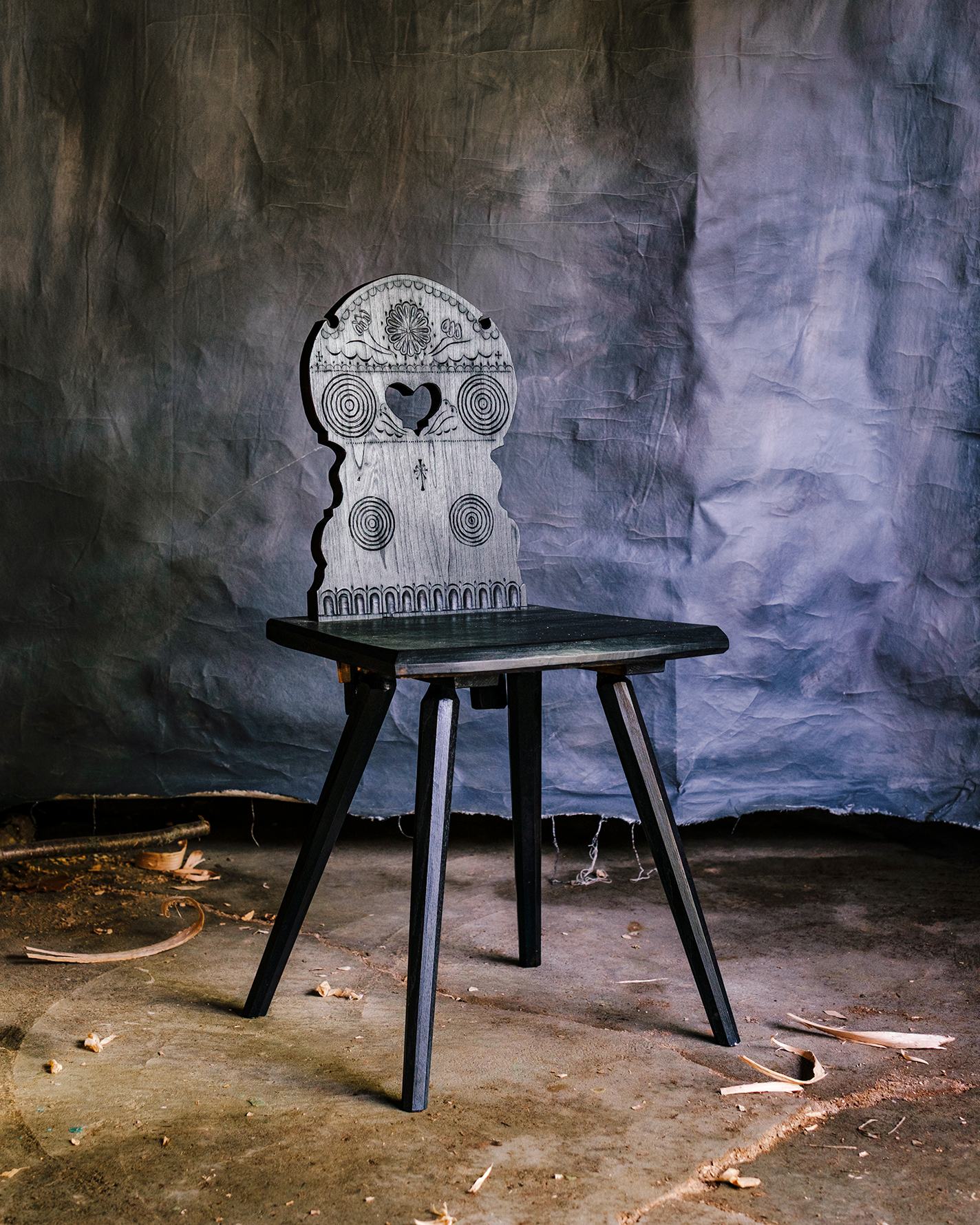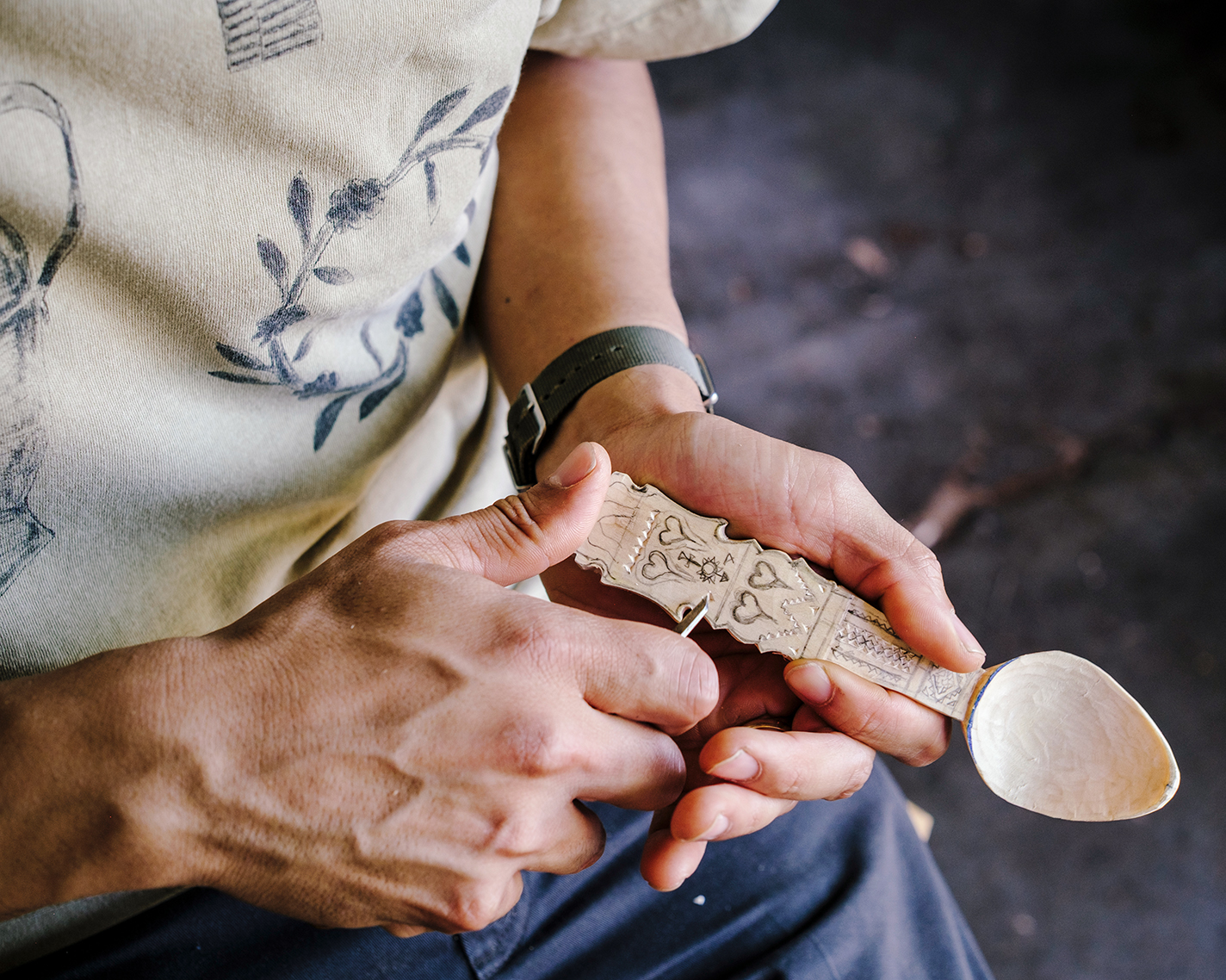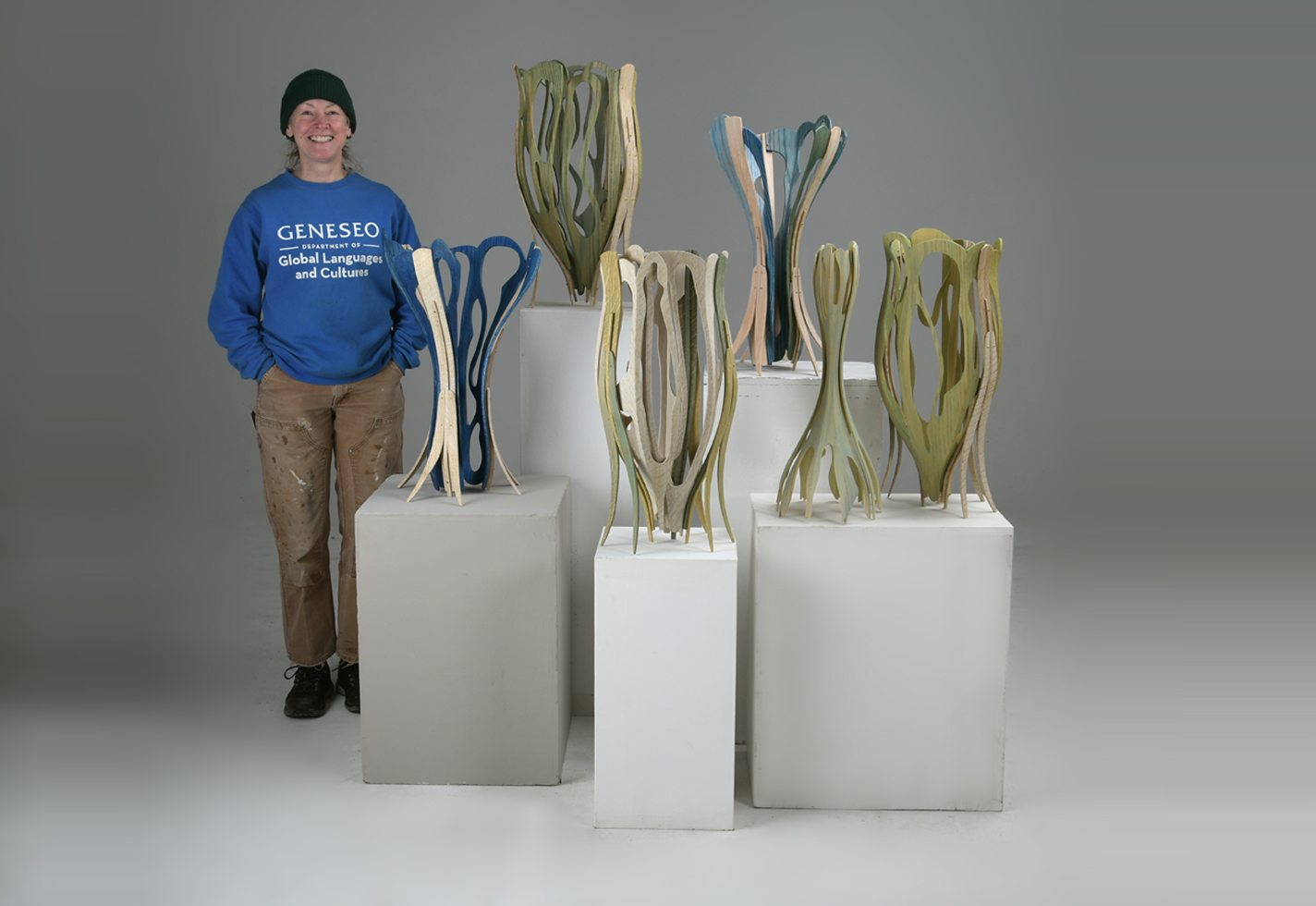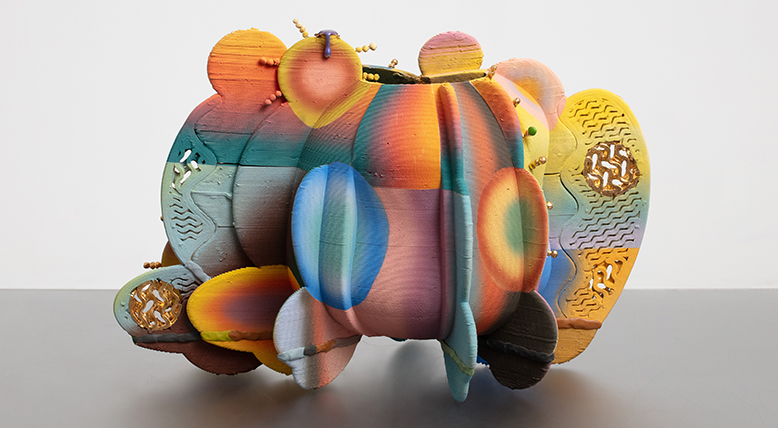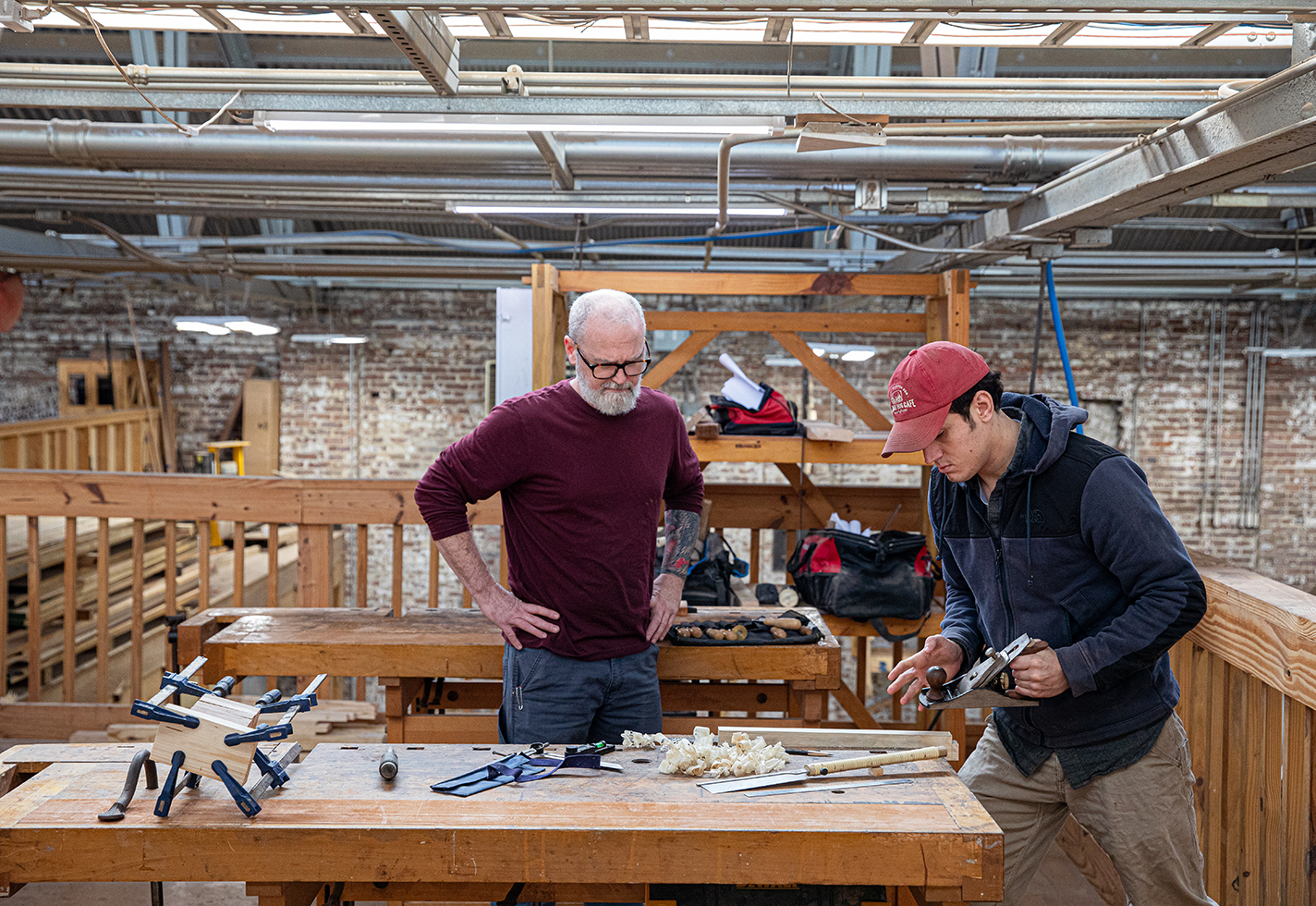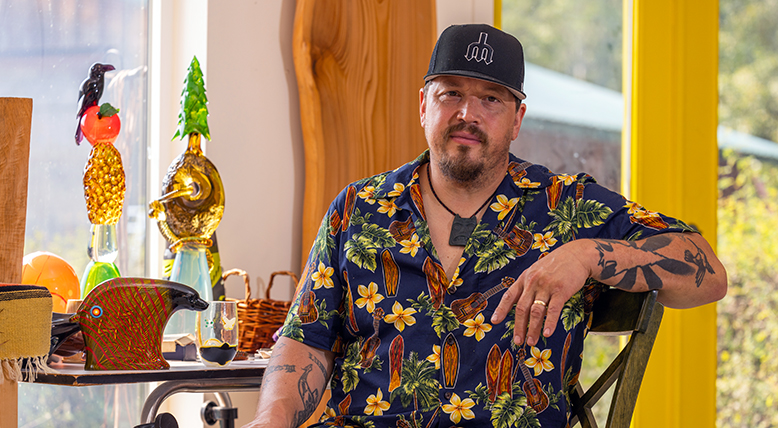A decidedly modest man, Charles Thompson works, mostly by himself, in what he describes on his website as “a humble workshop on a humble hill in Heath, Massachusetts,” a little village tucked away in the northwest corner of the state. In a pole barn, with mostly hand tools, he turns green wood into furniture such as simple three-legged stools, Windsor chairs, and fanciful brettstuhls—four-legged chairs with imaginatively shaped and ornamented backs that originated in German-speaking Europe and came to America via Moravian immigrants.
The results display a mastery of joinery and a loving absorption with carving floral and other repeated motifs.
“When I was little, I would do the rosary, and lots of carving is like that—just one thing repeated over and over again,” he says. “It’s musical, it’s rhythmic, and a chance to be outside of yourself. And it connects you to history: those are motions and cadences that people have been doing for a really long time.”
That kind of informed thoughtfulness about his craft comes readily to Thompson, whose initial calling was essay writing. The Nashua, New Hampshire, native earned an MFA in creative nonfiction from The New School in New York City. But as he attempted to launch his literary career, he hit a snag.
“I was working on this writing project that just kept getting bigger and more nebulous,” he says. “I just started making things with wood. What it was didn’t matter, and the quality didn’t matter. It was just nice to do something that was tactile, that existed in the world, that you couldn’t backspace and retype.”
These forays into physical making included furniture for his family’s apartment. As visiting friends noticed the work, they began to offer him commissions. “I’d always say yes,” he recalls. “And even if I couldn’t do it, I would use that opportunity to figure it out.”
After a short post–New York stint in Greenfield, Massachusetts, he and his family relocated to Heath in 2017. By a combination of trial, error, attendance at a couple of workshops, and diligent application, he was turning himself into a master craftsman.
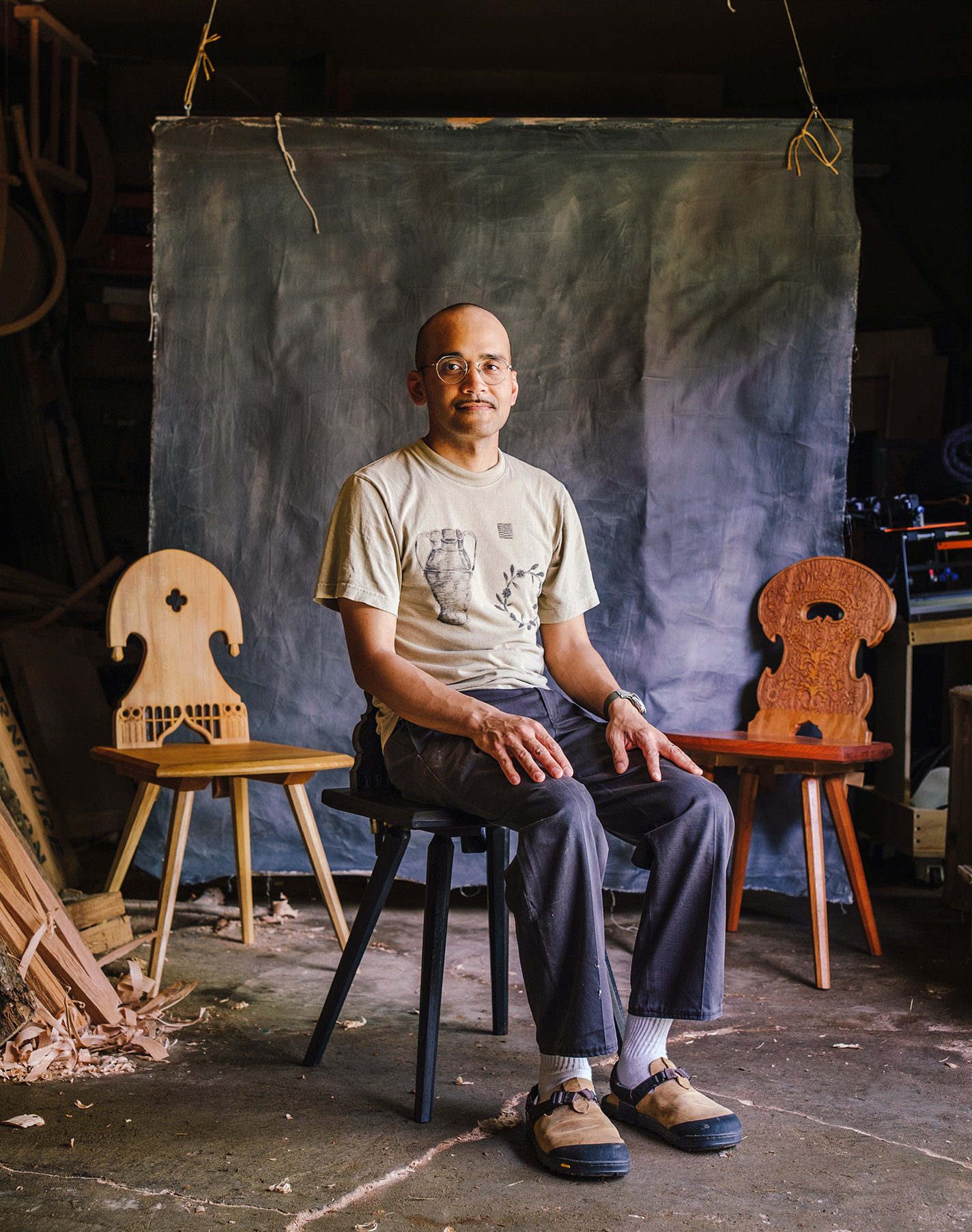
Charles Thompson sits on a brettstuhl.
